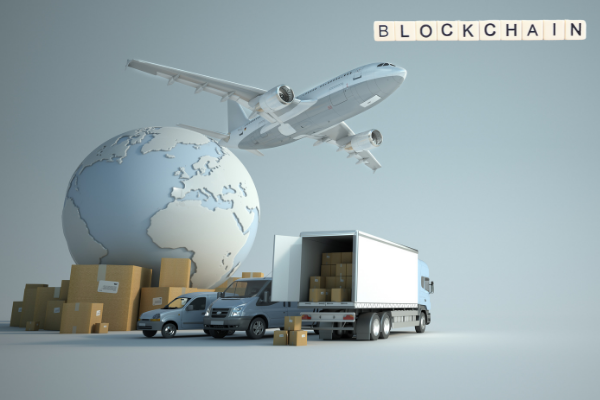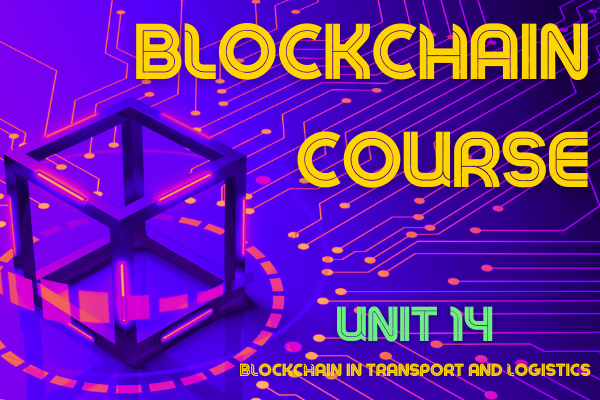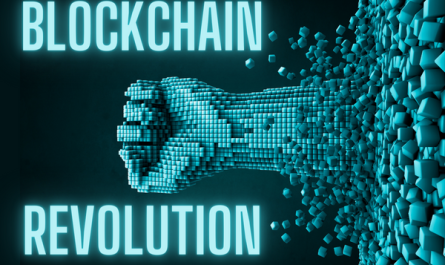Table of Contents
A curious paradox is occurring in the transportation and logistics (T&L) industry when it comes to applying blockchain technology. By increasing transparency, these distributed digital ledgers can mitigate the distrust that often exists between parties transacting in the industry, but conversely, that same existing distrust makes it difficult to create an entire blockchain system where everyone is present.
The paradox is reflected in the slow rate of blockchain adoption revealed in an October 2018 BCG survey of executives from more than 100 T&L companies. The vast majority of respondents (88%) believed blockchain will settle into the industry at least slightly. And the majority (59%) believed this settlement will take place in the next two to five years. But nearly three-quarters (74%) said they were only superficially exploring opportunities or had even considered blockchain at all. The most cited barriers to broader blockchain adoption are a lack of coordination among industry players, limited understanding of the technology and a lack of in-house capabilities.
The T&L industry is plagued by sources of friction, including myriad suppliers, dozens of deliverables and ever-changing regulations, which introduce non-value-added costs and can result in inaccurate or misrepresented information. By providing an immutable single source of truth and enabling process automation, blockchain can address many of the industry’s pain points such as traceability and security of cargo, speed of processes, and security in payment and billing processes.
These benefits can help companies in the industry substantially reduce operating costs, giving them greater profit margins from doing business. Companies can even use blockchain to develop entirely new business models, such as those related to virtual global networks, pooled fleets and on-demand staffing.
Given the dynamics of the industry, no T&L company can do it alone, so it is absolutely necessary for all stakeholders to collaborate in order to put in place a blockchain ecosystem that builds trust for all parties and generates mutual benefits. Each company must also work with suppliers, customers and even competitors to understand and implement solutions that address their specific business needs.

T&L and the Blockchain
Investors are aggressively supporting opportunities to develop blockchain applications for T&L. An analysis also by BCG found that, since 2013, venture capital investors have invested approximately $300 million in startups offering blockchain solutions relevant to T&L, including $53 million specifically in shipping and freight management, as well as trading and shipping platforms. In addition, T&L companies have invested millions of dollars in researching and developing their own blockchain solutions. The recent growth in investments suggests that new solutions will reach the market in the next one to three years. The question is whether companies will adopt them.
Major T&L players are beginning to explore ways to capture value using blockchains, both individually and from cross-industry collaborations. Notable examples include the following:
– A consortium of nine companies is developing a blockchain-enabled platform called the Global Shipping Business Network, with the goal of improving speed, transparency, collaboration and promoting digitization. Participants include carriers (CMA CGM, COSCO Shipping Lines, Evergreen Marine, OOCL and Yang Ming, DP World, Hutchison Ports, PSA International and Shanghai International Port) and a software solutions provider (CargoSmart).
– Anheuser-Busch InBev, Accenture, APL, Kuehne + Nagel and a European customs organization are collaborating on a cross-industry initiative to explore the application of blockchain to support documentation handling for maritime freight forwarding
– Maersk and IBM have jointly created TradeLens, a blockchain-enabled shipping solution designed to promote more efficient and secure global trade. The goal is to support information sharing and transparency across the value chain and foster innovation.
– The Blockchain in Transport Alliance seeks to drive blockchain adoption across the industry. The alliance is a consortium of approximately 400 members spanning the T&L, consumer goods and technology sectors and includes both established companies and startups.
But, as the survey results indicate, most industry participants have not considered the potential applications of blockchain. The opportunity analyses make it clear that companies should be willing to invest time and effort to apply this type of technology, as it can ameliorate a wide variety of weaknesses that impede information sharing and create costly inefficiencies.
Blockchain can help the industry address these weaknesses by providing an immutable shared data repository, promoting trust among participants and enabling automation of repetitive processes.
There are several applications where blockchain would give added value to the T&L industry such as goods origin control, end-to-end status tracking and payment and invoice management. These use cases illustrate how blockchain can address industry pain points:
– Origin of goods. Various mechanisms, including long-term trust relationships, government regulations or rigorous certification processes, serve as proxies to verify provenance. The use of blockchain obviates the need for these nexuses and associated costs. By registering materials, parts or products on a blockchain, participants can verify where these items originated and improve quality assurance.
Leading companies and startups are exploring applications of this use case in a variety of industries. De Beers is a good example. The company has worked with BCG on a blockchain-based solution to track diamonds from mine to finished pieces of jewelry. Although this platform, called Tracr, was initiated by De Beers and is currently in the pilot stage, it will become a solution for the entire diamond industry.
A diamond tracked on Tracr carries a digital fingerprint with reliable information about its origins and qualities, as well as critical transaction data, such as ownership transfers and processing. Tracr will help jewelers give the end customer confidence that the diamond has been ethically sourced and processed. The platform also allows users to leverage their digital assets and build various types of new businesses on top of it. Such businesses could include diamond-backed financing, compliance services or marketplace exchanges for consumers, services that are not possible without the ability to digitally track and verify each stone.
Another example is a startup called Provenance, which is working with Indonesian fishermen to use blockchains and smart tagging technology to verify sustainability claims regarding the fish they bring to market. These applications allow companies to not only increase the efficiency of supply chain processes, but also improve compliance and support a brand’s reputation and quality, which ultimately protect premium price points.
– End-to-end status tracking. To enable efficient coordination of counterparties and just-in-time deliveries, supply chain participants demand real-time visibility into the status of assets or freight in transit. Although a coordinator (such as a delivery service) can provide status updates, it is difficult to keep track when deliveries are made between parties with no prior transactional relationship. In addition, parties have incentives to retroactively manipulate data, for example, by making it appear that goods were delivered earlier than they actually were or that damaged goods were not under their control when the damage occurred.
By creating a unique identifier for each product, blockchain enables status tracking among multiple parties and prevents retroactive manipulation of data. Leading companies are pursuing initiatives to capture the benefits in their supply chains. For example, Walmart is now requiring lettuce and spinach suppliers to track the movement of produce from fields to stores using a blockchain database developed by IBM.
– Invoice and payment management. Because multiple parties involved in T&L transactions maintain their own records and ledgers, invoicing and payments are mostly paper-based processes that often involve manual data entry. To check for errors and inaccuracies (and potential fraud), companies must perform a time-consuming reconciliation step before payments are posted. Blockchain can be used to store and share digitized records and create smart contracts that automatically execute invoices and payments. Automated processing reduces settlement times, ensures accuracy and detects fraud, while eliminating the need for middlemen and paper-based processes. For example, a startup called CargoX has launched a blockchain-based shipping list platform. Its features include smart contracts and automated point-to-point payment execution.

Considering the magnitude of the potential benefits, blockchain adoption by the T&L industry has been slower than might be expected. Adoption has been hampered by the same obstacles related to coordination and trust that the technology would help the industry overcome. That, in essence, is the industry’s blockchain paradox. To resolve it, stakeholders must understand how the following two industry characteristics are inhibiting blockchain adoption:
– Fragmented value chain. The highly fragmented value chain of multiple unrelated parties makes the industry suitable for blockchain applications. But this fragmentation also hinders the adoption of a common blockchain standard. Of the executives surveyed, 60% believe that the biggest barriers to blockchain technology adoption are the absence of a common ecosystem and the lack of understanding among all the parties that make up the industry itself. Fragmentation also prevents the selection of a common technical standard. The absence of such a standard means that blockchain applications carried out by companies and consortia as independent initiatives are unlikely to be compatible with each other. The limited scale of these initiatives increases the cost of adoption and decreases potential returns.
The challenges of the fragmented value chain are compounded by regulatory complexity. T&L companies typically operate in multiple countries and jurisdictions with varying, and often complex, regulatory requirements. More than one-third (35%) of executives named regulatory compliance issues as a major obstacle to blockchain adoption.
– Limited trust. Because T&L is a highly competitive industry, participants may be reluctant to share information. To overcome their trust issues, T&L firms have traditionally relied on long relationships with other participants in the value chain, including intermediaries and brokers. Many companies are unwilling to share information outside of these established relationships. In fact, many companies take advantage of information asymmetry to generate revenue and profits. As a result, a substantial number of stakeholders are reluctant to abandon their relationships and give up their information advantages in favor of blockchain solutions.
Lack of awareness of blockchain technology and its benefits appears to be a major obstacle to leveraging it and overcoming trust issues. BCG’s survey found that only 16% of T&L executives feel they have a clear understanding of blockchain technology and its implications for their industry. In line with this, only 20% of respondents consider blockchain to be among their companies’ top 10 strategic priorities. Underinvestment in technology and a lack of deep digital capabilities are likely the biggest contributing factors. For T&L companies to trust blockchain and change their current ways of working, they need to better understand the benefits and applicability of the technology.
But, as we have seen, in recent years, many companies are starting to become aware of the great potential blockchain has for their business and are investing heavily in adapting it. Carrefour announced at the end of 2018 that it would launch in Spain the first food traceability system based on blockchain for one of its products: free-range chicken.
In this way, and thanks to the blockchain, it allows strict traceability of the item at all stages of production, processing and distribution. To do this, it used the IBM Food Trust open platform of which, in addition, Carrefour is a founding member, and the services of IBM and the collaboration of the food company Coren.




